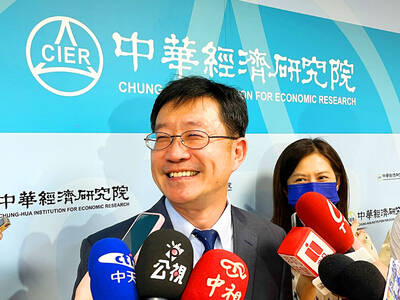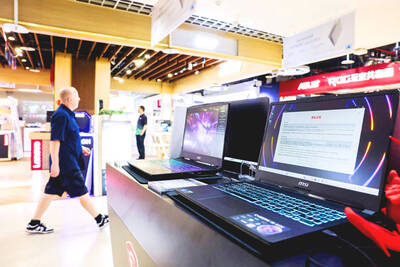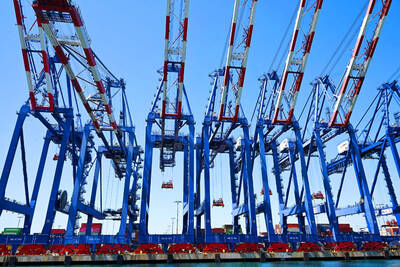Former Miss Nepal Malvika Subba had a successful career in TV before she gave up show business for the distinctly less glamorous job of selling houses.
“This is where the money is,” the former actress and presenter said in her plush new office in downtown Kathmandu. “When I was offered a job marketing real estate, I said ‘yes’ straight away, because it looked interesting and I could see that business was booming.”
Subba is head of sales and marketing at Nepalese property developer Shangri-La Housing, which builds and sells luxury apartments — until recently a virtually unknown concept in Kathmandu.
As the global credit crunch has sent housing markets around the world reeling, Kathmandu is experiencing a surprise property boom as wealthy Nepalese seek a safe haven for their money — and themselves.
“Many people tell us that it is not safe outside the capital and that they live in constant fear,” said Subba, who believes insecurity and investment are the two biggest drivers of the capital’s housing market. “People see property as a good investment opportunity.”
Kathmandu’s population exploded during the decade-long civil war between the Maoists and the army as people flocked to the relative safety of the capital.
The influx pushed up land values in the city. The Nepal Land and Housing Association, which groups many of the country’s estate agents, said land prices have risen by 300 percent since the height of the Maoist insurgency in 2003.
“Land became a valuable commodity,” said Chiranjibi Subedi, the government’s top planning official for Kathmandu.
Subedi said the influx had continued since the end of the conflict in 2006, with many property buyers citing continued instability in their home districts as their primary reason for moving to the capital.
“Insecurity seems to be the main driver of internal migration into Kathmandu since the conflict,” he said. “The number of proposals for new high-rise buildings and apartment complexes just keeps on growing.”
Government figures show the number of new apartments built in Kathmandu rose more than three-fold last year to 3,385 from 1,088 in 2007, as high land prices and poorly enforced planning laws made building upward more attractive.
There are currently more than 250 high-rise blocks being built in the capital, the planning ministry said.
Wealthier residents are increasingly opting for apartments over houses, citing security and ease, despite prices of up to 12,000 rupees per square foot (US$1,700 per square meter) in one of the world’s poorest countries.
“The building is guarded and you can trust the neighbors. It’s also convenient because you don’t have to worry about maintenance,” said Juna Manandhar, 35, who lives in an apartment block in an upscale area of Kathmandu.
For Dinesh Shrestha, 29, owning an apartment offers “a blend of privacy and community,” and is also an investment.
“Land prices never go down,” he said.
Shangri-La’s Subba said many of her company’s apartments were being snapped up by Nepalese people living abroad who, similarly, view them as a good investment.
But some experts believe prices are now simply too high to be sustainable.
“The real estate boom in Nepal is purely speculative,” said Sandeep Gautam, editor of the English-language monthly New Business Age. “The economy is shrinking and people’s purchasing power is declining. [The market] can’t support this kind of aberrant growth in any sector for long.”
Planning official Subedi said 70 percent of apartments in Kathmandu currently stood empty, suggesting those who have bought purely as an investment have been unable to let their properties.
The rise in property prices is fuelled partly by the lack of alternative investment opportunities in Nepal, where political instability has long hampered economic development.
But Gautam says that Nepal’s GDP is falling, and says the country’s banks are too heavily invested in property.
“Some banks have up to 70 percent loan exposure in real estate. The banks have invested in both the buyers and the builders,” he said. “You do the math.”

WEAKER ACTIVITY: The sharpest deterioration was seen in the electronics and optical components sector, with the production index falling 13.2 points to 44.5 Taiwan’s manufacturing sector last month contracted for a second consecutive month, with the purchasing managers’ index (PMI) slipping to 48, reflecting ongoing caution over trade uncertainties, the Chung-Hua Institution for Economic Research (CIER, 中華經濟研究院) said yesterday. The decline reflects growing caution among companies amid uncertainty surrounding US tariffs, semiconductor duties and automotive import levies, and it is also likely linked to fading front-loading activity, CIER president Lien Hsien-ming (連賢明) said. “Some clients have started shifting orders to Southeast Asian countries where tariff regimes are already clear,” Lien told a news conference. Firms across the supply chain are also lowering stock levels to mitigate

IN THE AIR: While most companies said they were committed to North American operations, some added that production and costs would depend on the outcome of a US trade probe Leading local contract electronics makers Wistron Corp (緯創), Quanta Computer Inc (廣達), Inventec Corp (英業達) and Compal Electronics Inc (仁寶) are to maintain their North American expansion plans, despite Washington’s 20 percent tariff on Taiwanese goods. Wistron said it has long maintained a presence in the US, while distributing production across Taiwan, North America, Southeast Asia and Europe. The company is in talks with customers to align capacity with their site preferences, a company official told the Taipei Times by telephone on Friday. The company is still in talks with clients over who would bear the tariff costs, with the outcome pending further

NEGOTIATIONS: Semiconductors play an outsized role in Taiwan’s industrial and economic development and are a major driver of the Taiwan-US trade imbalance With US President Donald Trump threatening to impose tariffs on semiconductors, Taiwan is expected to face a significant challenge, as information and communications technology (ICT) products account for more than 70 percent of its exports to the US, Chung-Hua Institution for Economic Research (CIER, 中華經濟研究院) president Lien Hsien-ming (連賢明) said on Friday. Compared with other countries, semiconductors play a disproportionately large role in Taiwan’s industrial and economic development, Lien said. As the sixth-largest contributor to the US trade deficit, Taiwan recorded a US$73.9 billion trade surplus with the US last year — up from US$47.8 billion in 2023 — driven by strong

RESHAPING COMMERCE: Major industrialized economies accepted 15 percent duties on their products, while charges on items from Mexico, Canada and China are even bigger US President Donald Trump has unveiled a slew of new tariffs that boosted the average US rate on goods from across the world, forging ahead with his turbulent effort to reshape international commerce. The baseline rates for many trading partners remain unchanged at 10 percent from the duties Trump imposed in April, easing the worst fears of investors after the president had previously said they could double. Yet his move to raise tariffs on some Canadian goods to 35 percent threatens to inject fresh tensions into an already strained relationship, while nations such as Switzerland and New Zealand also saw increased